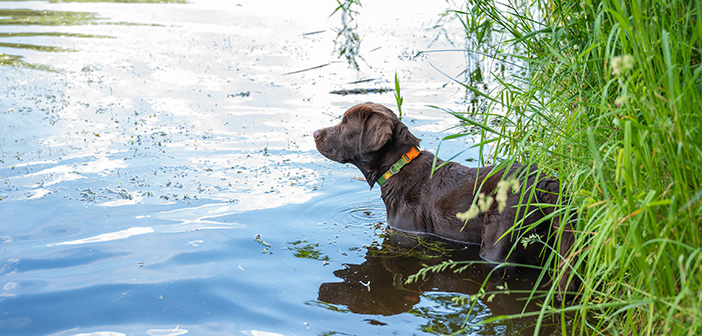The British Veterinary Association is asking pet owners to take extra precautions when walking their dogs near water bodies this summer, as hot weather conditions have led to concerns about an increase in toxic blue-green algae in locations across the UK.
Earlier this month, in an incident in the Scottish Highlands, a dog died after coming into contact with suspected blue-green algae at Loch Awe.
Blue green algae, or cyanobacteria, are a group of bacteria that can contain dangerous toxins which can be harmful and potentially fatal to pets, livestock and birds if ingested even in small quantities.
The algae may appear as green or greenish-brown scum on the surface of water. Dogs can swallow it by drinking water from an affected lake, river or pond or while licking their fur after going for a swim.
Symptoms of exposure can appear within a few minutes or hours, depending on the type of toxin ingested, and commonly include vomiting, diarrhoea, drooling, disorientation, trouble breathing, seizures, and blood in faeces. If left untreated, it can cause liver damage and ultimately be rapidly fatal.
Algal blooms have so far this year been reported in water bodies across the UK, including several locations in the Central Belt of Scotland, as well as in Derbyshire, the Midlands, Essex, Pembrokeshire and the Brecon Beacons.
BVA senior vice president Daniella Dos Santos said: “It’s been a warm start to the summer and we have started hearing of increasing numbers of blue-green algae sightings across the UK.
“While a paddle in a cool lake may be your dog’s favourite outdoor activity at this time of the year, we’d urge pet owners to keep them on a lead during walks near water bodies confirmed to have algal blooms. The majority of blooms are toxic and it is impossible to tell the difference visually, so it is better to be safe than sorry.”


